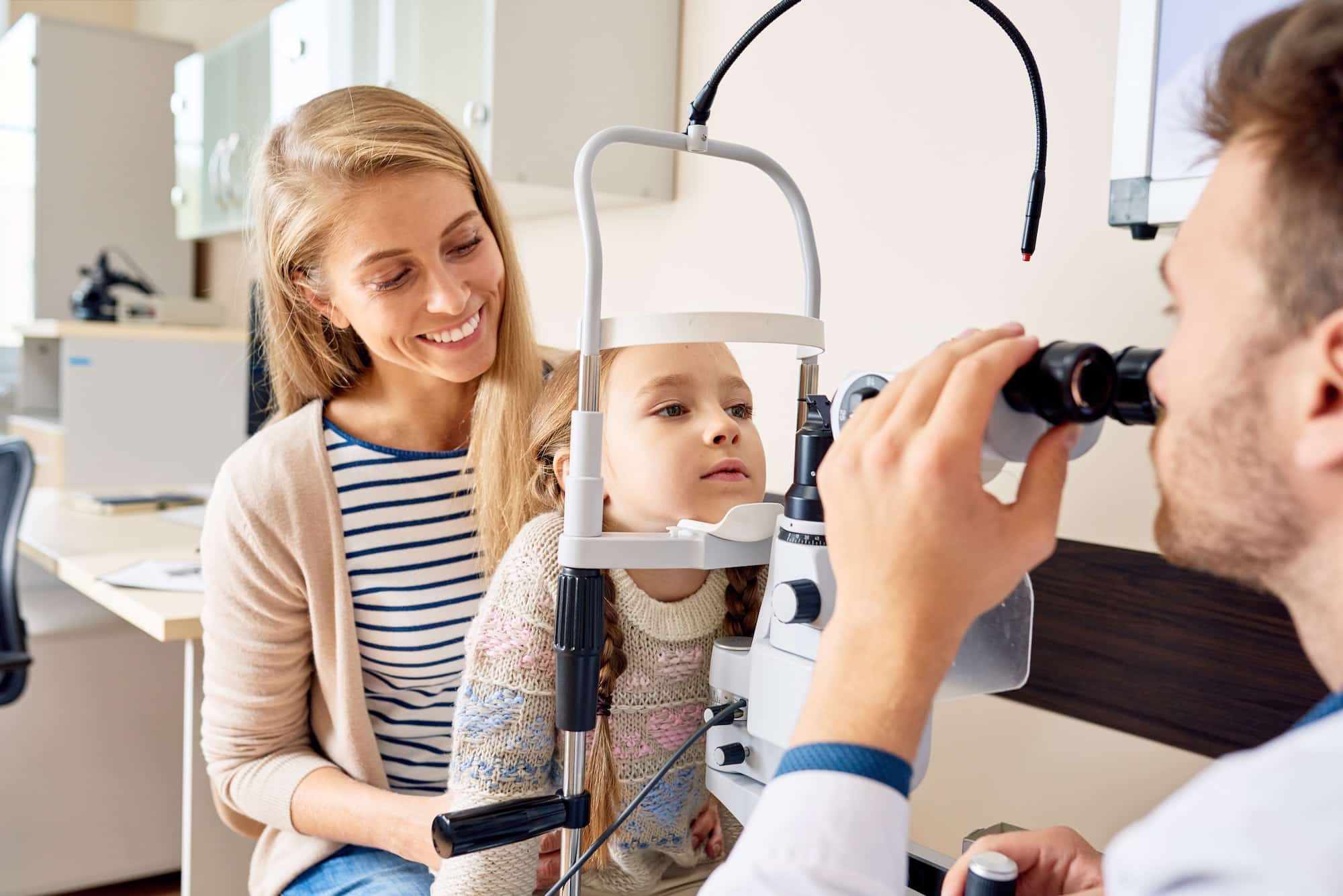Children’s Eye Health and Safety Month is celebrated every August to raise awareness about the importance of taking care of children’s eyes. Eye health and good eyesight are essential for young children’s physical and cognitive development. Since it’s not always easy for kids to understand when their eyes aren’t healthy, parents should stay on top of the most common vision issues in children.
These common conditions include myopia (nearsightedness), hyperopia (farsightedness), and astigmatism. An optometrist can not only detect them but also other severe eye conditions such as amblyopia (lazy eye), strabismus (crossed eyes), and color blindness. Eye injuries are also common among children, including accidental or sports-related injuries.

Short-sightedness
Also known as myopia, this is an eye condition in which an individual has difficulty seeing distant objects clearly without corrective lenses.
Lazy eye
A lazy eye is a poor vision resulting from abnormal visual development in early childhood.
Crossed eyes
Crossed eyes are a condition in which the two eyes do not align properly and appear to look in different directions.
Eye injuries
Eye injuries are common among children; most injuries are sports-related or accidental.
Additionally, children are spending more time on screens and devices than ever before. Here are some helpful tips for managing screen time with children from the American Academy of Ophthalmology.
Take breaks. The American Academy of Ophthalmology recommends the 20-20-20-20 rule:
- Take a break every 20 minutes.
- Look away and let your eye muscles relax for 20 seconds or more.
- Look into the distance, out a window, or down a hallway at an object that’s at least 20 feet away.
- Close the eyes or blink rapidly for 20 seconds, and use eye drops to re-lubricate the surface of the eye.
Maintain good posture.
Position the laptop or tablet at eye level, and an arm’s length–about 18 to 24 inches–away from and directly in front of your child’s body. Reduce screen glare.
Place any lamps behind your child and don’t aim them toward the computer. Discourage your child from using a device outside or in brightly lit areas.

Minimize blue light exposure.
Decrease your child’s exposure to blue light with blue light glasses or by switching to the computer’s night mode. Adjust screen brightness and contrast.
Don’t let your child use a device in a dark room. The pupil expands to accommodate darkness, and the screen’s brightness can irritate the eyes.
Spend time outside.
Studies suggest that spending time outdoors, especially in early childhood, can slow the progression of nearsightedness.
If your child is struggling with school or learning, squinting often, having difficulty reading fluidly, or losing her place on the page, then have an ophthalmologist or optometrist examine her eyes. Call us today to schedule your child’s appointment!
SOURCE: “Children’s Eye Health and Safety Month” NationalToday, https://nationaltoday.com/childrens-eye-health-and-safety-month/.
SOURCE: Weill Cornell Medicine, 17 August 2021, https://weillcornell.org/news/children%E2%80%99s-eye-health-and-safety-month

